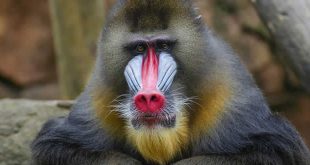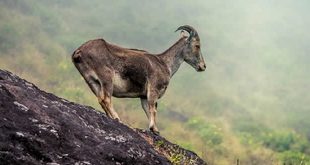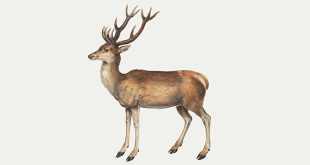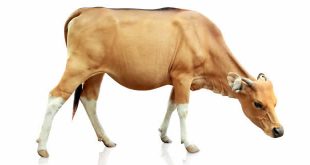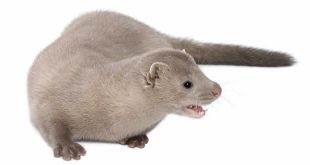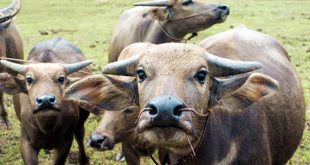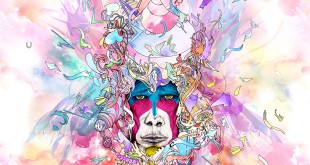 Lion — The lion (Panthera leo) is a member of the family Felidae and one of four “big cats” in the genus Panthera. With exceptional large males exceeding 250 kg (550 lb) in weight, it is the second-largest living cat after the tiger. Wild lions currently exist in sub-Saharan Africa and in Asia with a critically endangered remnant population in northwest India, having disappeared from North Africa, the Middle East, and western Asia in historic times. Until the late Pleistocene (about 10,000 years ago), the lion was the most widespread large land mammal beside humans. They were found in most of Africa, much of Eurasia from western Europe to India, and the Bering land bridge and, in the Americas, from the Yukon to Peru.
Lion — The lion (Panthera leo) is a member of the family Felidae and one of four “big cats” in the genus Panthera. With exceptional large males exceeding 250 kg (550 lb) in weight, it is the second-largest living cat after the tiger. Wild lions currently exist in sub-Saharan Africa and in Asia with a critically endangered remnant population in northwest India, having disappeared from North Africa, the Middle East, and western Asia in historic times. Until the late Pleistocene (about 10,000 years ago), the lion was the most widespread large land mammal beside humans. They were found in most of Africa, much of Eurasia from western Europe to India, and the Bering land bridge and, in the Americas, from the Yukon to Peru.
Lions live for approximately 10–14 years in the wild, while in captivity they can live over 20 years. They typically inhabit savanna and grassland, although they may take to bush and forest. Lions are unusually social compared to other cats. A pride of lions consists of related females and offspring and a small number of adult males. Groups of female lions typically hunt together, preying mostly on large ungulates. The lion is an apex and keystone predator, although they will resort to scavenging if the opportunity arises. While lions, in general, do not selectively hunt humans, some have been known to become man-eaters and seek human prey.
The lion is a vulnerable species, having seen a possibly irreversible population decline of 30 to 50% over the past two decades in its African range; populations are untenable outside designated reserves and national parks. Although the cause of the decline is not well-understood, habitat loss and conflicts with humans are currently the greatest causes of concern. Lions have been kept in menageries since Roman times and have been a key species sought after and exhibited in zoos the world over since the late eighteenth century. Zoos are cooperating worldwide in breeding programs for the endangered Asiatic subspecies.
The male lion is highly distinctive and is easily recognized by its mane. The head of the male lion, is one of the most widely recognized animal symbols in human culture. It has been depicted extensively in literature, in sculptures, in paintings, on national flags, and in contemporary films and literature.
The lioness has been recognized, however, as the pinnacle of hunting prowess from the earliest of human writings and graphic representations. The lionesses are the hunters for their pride and execute their skills with precision and complex teamwork. Each lioness develops specific skills for her role in the hunting techniques used by her pride and, generally, assumes that role during most hunts. Members of human cultures living among lions in natural habitats have understood this characteristic and often have chosen the lioness to represent their most ferocious war deities and warriors, often naming their male rulers as her “son”. Examples drawn from the earliest of written records include the Egyptian pantheon deities of Sekhmet, Bast, Menhit, and Tefnut and these deities may have had precursors in Nubia and Lybia. Other Egyptian deities are quite complex and assume aspects that may include one as a lioness headed human or a lioness in specific roles. Depictions of lions hunting in groups have existed from the Upper Paleolithic period, with carvings and paintings from the Lascaux and Chauvet Caves.
The lion is the second largest feline after the tiger. With powerful legs, a strong jaw, and long canine teeth, the lion can bring down and kill large prey. Lion coloration varies from light buff to yellowish, reddish or dark ochraceous brown. The underparts are generally lighter and the tail tuft is black. The color of the mane varies from blond to black.
Lions spend much of their time resting and are inactive for about 20 hours per day. Although lions can be active at any time, their activity generally peaks after dusk with a period of socializing, grooming and defecating. Intermittent bursts of activity follow through the night hours to dawn, when hunting most often takes place. They spend an average two hours a day walking and 50 minutes eating.
 Kids Portal For Parents India Kids Network
Kids Portal For Parents India Kids Network
